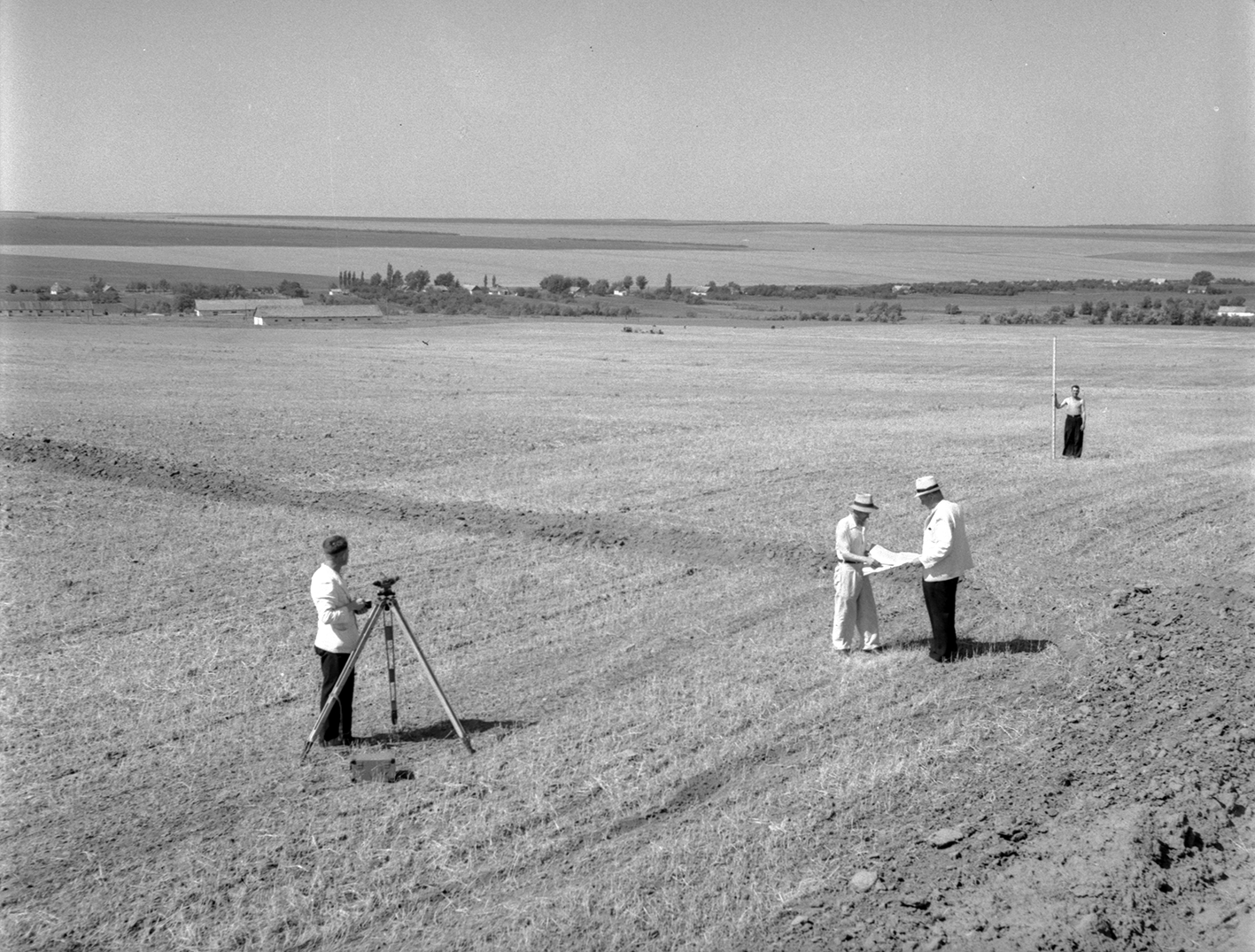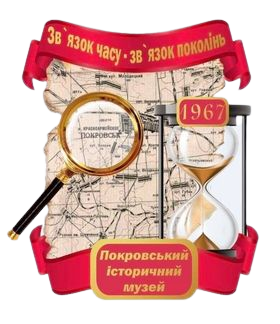Photographs of the construction of the 133-km Siverskyi Donets – Donbas channel, built in 1955–1958, beam with technological optimism about the development of Ukraine’s climate-adverse regions. The “empty space” in the photographs alludes to the potential value of land as a resource, whereas machinery represents a future full of innovation and technological advancement. These images indicate that technocratic society will not only adjust, but create the optimal conditions for its own benefit, even at the cost of irreversible change to the environment of the entire region.

Geodetic survey in Shyroka gully, Horlivka district, Stalino Oblast, at the construction of the channel Siverskyi Donets — Donbas. August 22, 1954 Source: CSFPPA
Themes related to the irrigation project have an important place in world history. Soviet journalists generated widely used of images of hydro-engineering facilities, such as the dams that “tamed” the natural power of rivers, or channels that “transformed” deserts into agricultural lands, or electric power stations. These images were part of the broader visual mythologization of the power of Soviet heavy industry and the care taken by the Soviet state to improve the welfare of its people.

Casing the slopes and base of the channel’s bed. Left to right: installation foreman V.I. Koniakhin, engineer of the design bureau B.A. Nikiforov and chief of mechanization department of “Donbaskanalbud” I.L. Volnyi, Stalino region. September 26, 1958 Source: CSFPPA
In the foreground, the photo shows engineers casing the channel’s slopes, the installation foreman Koniakhin looks like a military general as he explains to his colleagues his plans to conquer the steppe. A group of experts is represented by a professional manager, a structural engineer, and a mechanical engineer. The conquest of nature was viewed as a technical target. Thus, it was natural that engineers were employed to carry out the job.
For Soviet viewers, the image of the mechanized digging of a channel might also have had additional connotations. In Stalin’s time, channel cutting was carried out by GULAG prisoners. Conversely, in this photo, forced manual labor is replaced by machinery, which might be seen to symbolize a new political track for the government.




